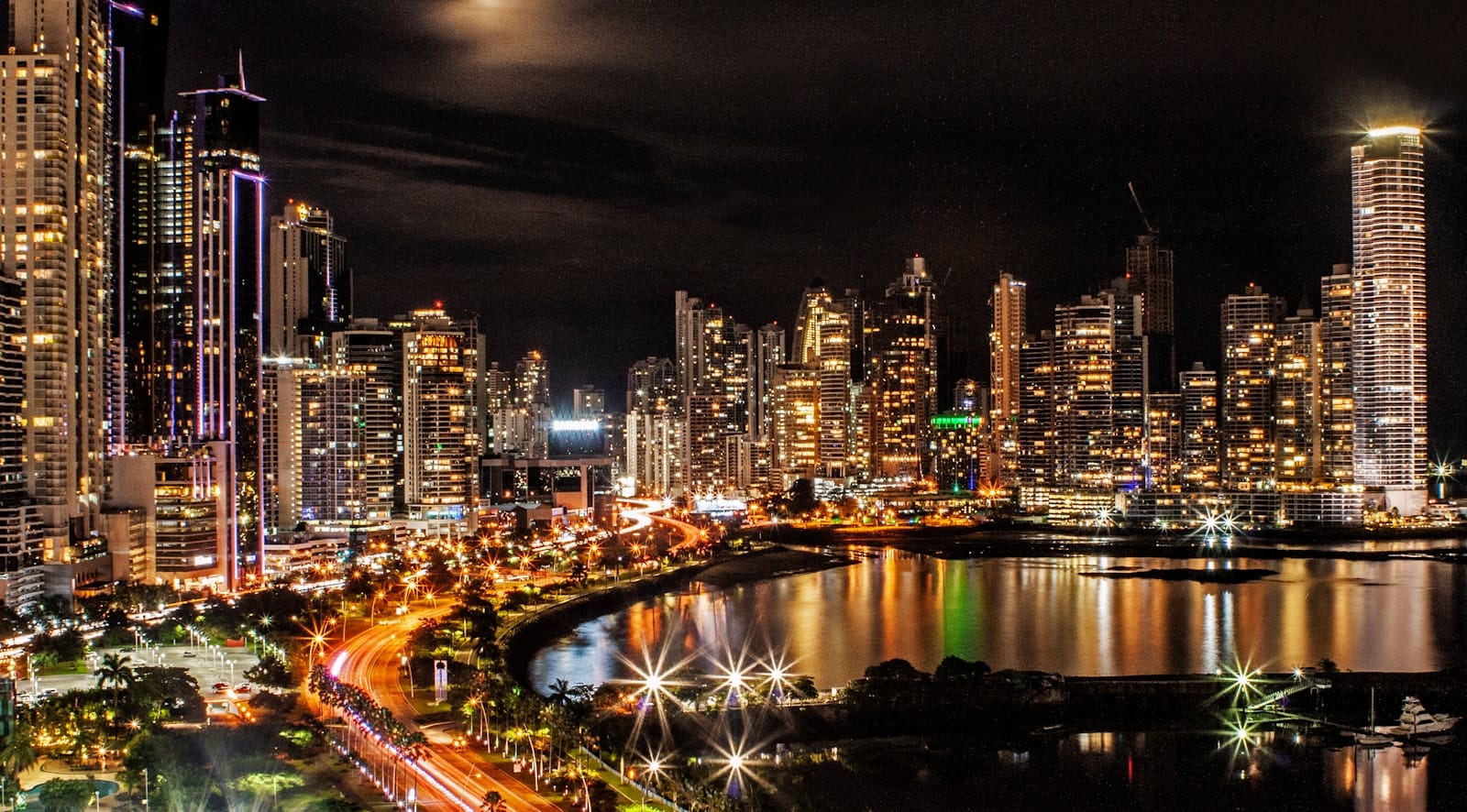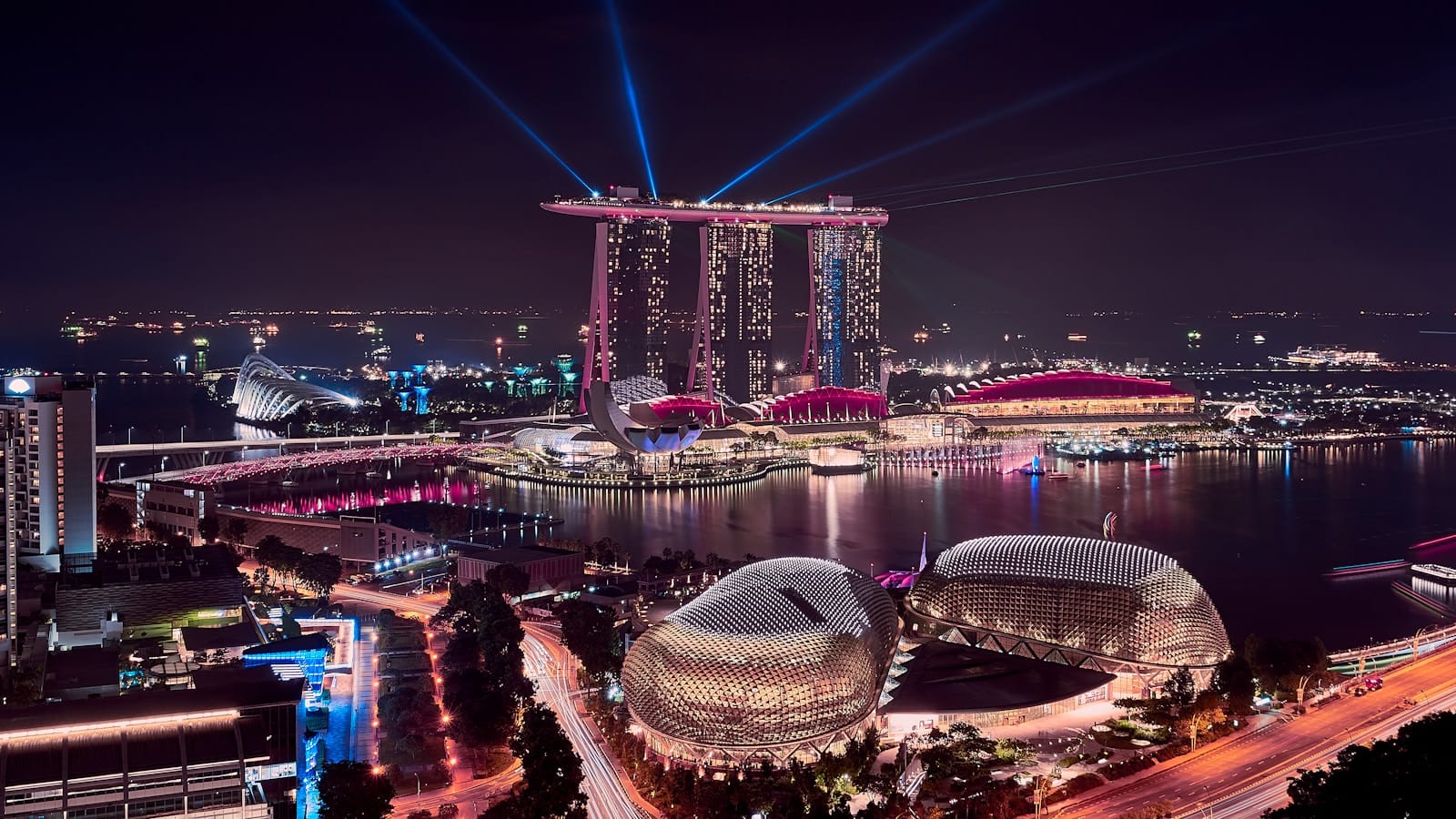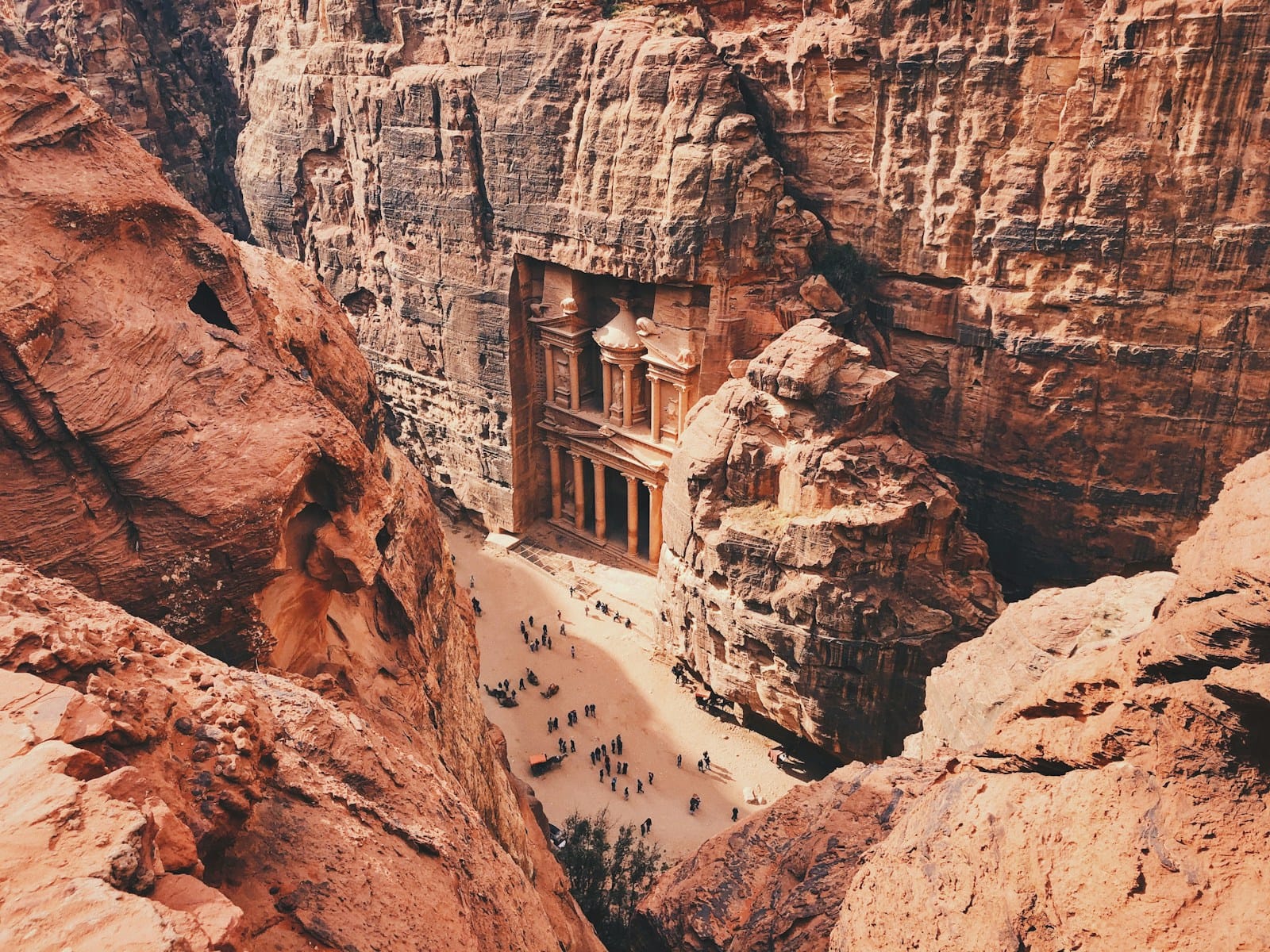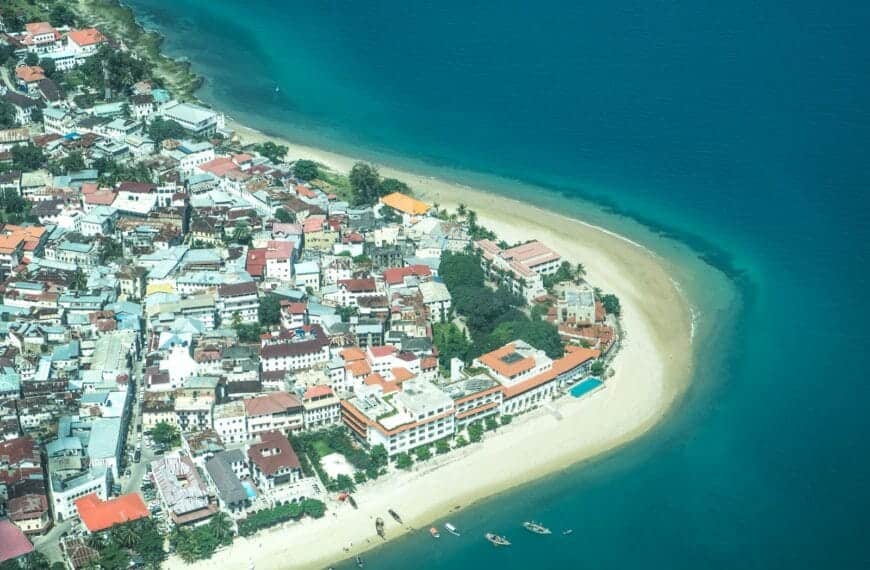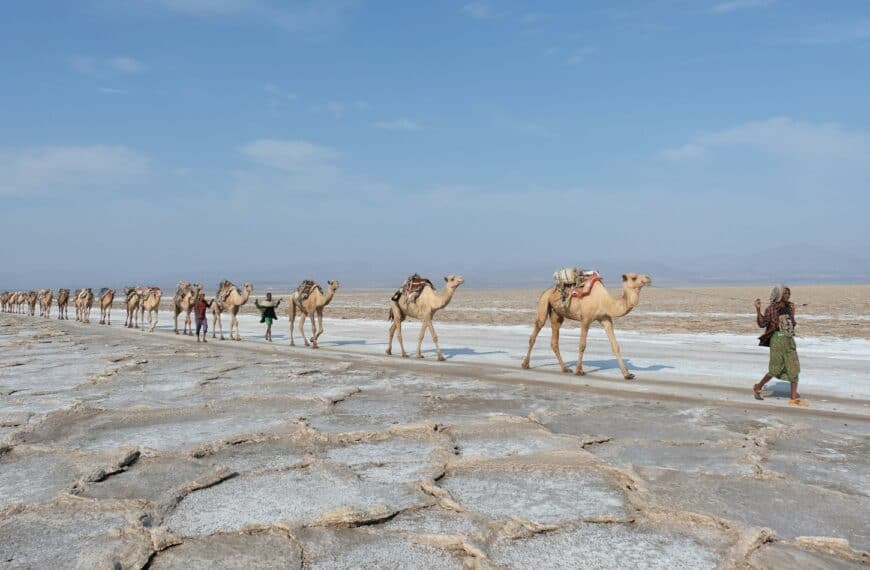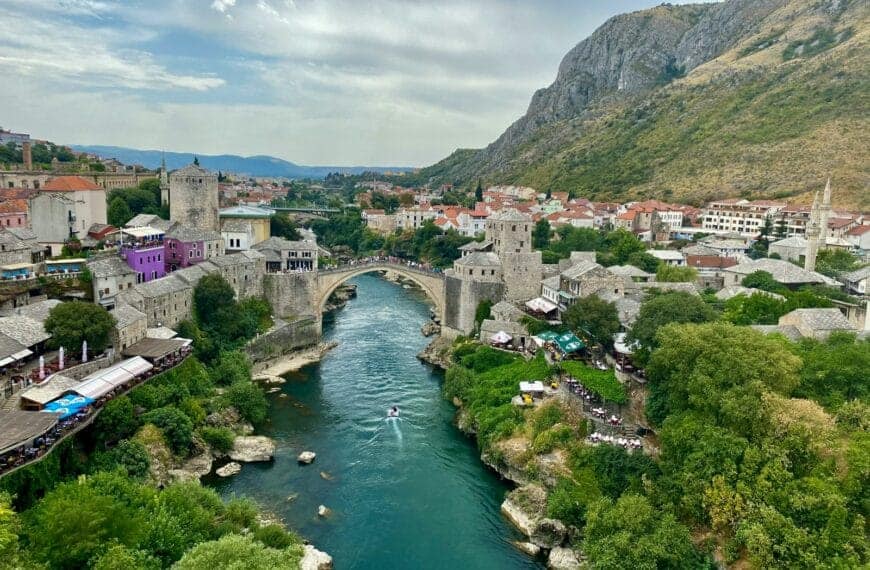Panama Travel Guide: Where Jungles Meet Oceans
Intro to Panama Travel Guide
Panama is a country of dazzling contrasts, where skyscrapers line the waterfront of Panama City while wild rainforests and Caribbean islands remain just a short drive or boat ride away. Known as the “Crossroads of the Americas,” Panama bridges continents and oceans, blending cultures, cuisines, and landscapes into one fascinating journey. From traversing the famous Panama Canal to trekking in cloud forests and lounging on remote beaches, this country offers experiences for every type of traveler. Use this Panama travel guide to plan your adventure and uncover the unique rhythms of Central America’s most cosmopolitan yet untamed destination.
Start planning your trip with our complete Panama tour guide — from region breakdowns to the top things to do in Panama.
Travel Destinations in Panama
Azuero Peninsula | Bocas del Toro | Chiriquí Highlands | Coclé | Colón Province | Darién Province | Guna Yala (San Blas Islands) | Herrera | Los Santos | Panama Province | Veraguas
💡Quick Facts:
Destination: Panama
Continent: North America (Central America)
Country: Republic of Panama
Administrative Divisions: 10 provinces, 3 indigenous comarcas (Guna Yala, Emberá, Ngäbe-Buglé)
Area: 75,420 km² (29,120 mi²)
Population: ~4.4 million
Density: ~150 people per km²
Capital: Panama City
Regions/Subregions: Azuero Peninsula, Chiriquí Highlands, Bocas del Toro, Darién, San Blas Islands, Panama Canal Zone
Official & Regional Languages: Spanish (official); English common in business/tourism; indigenous languages (Ngäbere, Guna, Emberá)
Currency: Panamanian Balboa (PAB, coins only) and United States Dollar (USD, legal tender)
Time Zone(s): Eastern Standard Time (UTC–5, no daylight saving)
Airports: Tocumen International Airport (PTY, Panama City), Enrique Malek International (DAV, David), Scarlett Martínez International (RIH, Río Hato), Marcos A. Gelabert Airport (PAC, domestic hub)
Climate: Tropical maritime – hot and humid year-round; dry season Dec–Apr; rainy season May–Nov
Known For: Panama Canal, Casco Viejo (UNESCO), biodiversity and rainforests, Caribbean & Pacific beaches, Bocas del Toro, San Blas Islands, coffee and cacao regions
🛂Arrival Info:
Visa Policy: Visa-free for 100+ nationalities (U.S., Canada, EU) up to 180 days
Visa Required: For restricted countries; some need electronic travel authorization
Visa on Arrival: Limited; most must apply in advance
Max Tourist Stay: 180 days (extensions possible)
Onward Travel: Proof of return/onward ticket may be requested
Immigration Authority: Servicio Nacional de Migración
🏥Health Info:
Vaccines Required: Yellow Fever if arriving from endemic countries
Vaccines Recommended: Routine immunizations, Hepatitis A, Typhoid
Health Risks: Mosquito-borne diseases (dengue, Zika, chikungunya)
Hospitals: Modern hospitals in Panama City (e.g., Punta Pacifica, Hospital Nacional)
English-Speaking Clinics: Available in major cities and tourist hubs
Rural Access: Limited healthcare in remote areas
Insurance: Strongly advised, with evacuation coverage
Emergency Number: 911
🚑 Check travel insurance options for travel emergencies, delays, and medical needs abroad — Get coverage here
💉 Stay Informed with Official Updates: WHO – International Travel & Health | CDC – Travel health updates
🚨Travel Advisory:
Safety Level: Generally safe; exercise caution in urban areas
Petty Crime: Pickpocketing and theft in crowded areas
High-Risk Areas: Avoid Darién Province (criminal activity, limited law enforcement)
Weather Risks: Flooding and landslides during rainy season (May–Nov)
🌍Track Real-Time Official Updates: US Travel Advisory | UK Foreign Travel Advice | Government of Canada | NZ SafeTravel
🥳Holidays:
New Year’s Day: Jan 1
Independence from Colombia: Nov 3
Flag Day: Nov 4
Colon Day: Nov 5
Independence from Spain: Nov 28
Carnival: Feb/Mar (dates vary)
Christmas Day: Dec 25
💰Visitor Info:
Currency: USD and PAB (coins only)
Cards & ATMs: Credit/debit widely accepted; ATMs in cities
Tipping: 10% in restaurants; small tips in taxis/hotels optional
Tourist Taxes: Hotel taxes may apply
Duty-Free: Tocumen Airport has large duty-free zone
Average Budget: $40–70 (budget), $100–150 (mid-range), $200+ (luxury)
🛫Airports:
Tocumen International Airport (PTY): Main hub in Panama City
Enrique Malek (DAV): Gateway to Chiriquí and Boquete
Scarlett Martínez (RIH): Serves beach resorts in Río Hato
Marcos A. Gelabert (PAC): Domestic flights near Panama City
🧳 Delayed or canceled flight? Check if you’re eligible for compensation
🚍Transport:
Urban Transit: Panama Metro (Panama City), buses, taxis, Uber
Domestic Travel: Flights to Bocas del Toro, David, San Blas
Buses: Intercity buses connect most provinces
Driving Laws: Right-hand traffic; IDP recommended
Ferries: Regular services to Taboga Island, Pearl Islands, Bocas del Toro
🚗 Book reliable airport transfers and in-city rides in advance. Reserve your ride here
🛰️Connectivity:
Mobile Networks: Movistar, Claro, Digicel, Más Móvil
Coverage: Strong in cities; weaker in remote areas
eSIM Options: Available via carriers or apps (Airalo, Holafly)
Public Wi-Fi: Hotels, malls, cafes, airports
🛜 Stay connected abroad with affordable eSIM data packs. Get your eSIM here
📜Laws & Etiquette:
Drinking Age: 18
Smoking Laws: Banned in public areas
Dress Code: Casual; conservative attire in rural/religious settings
Etiquette: Handshakes or cheek kisses common greetings
LGBTQ+ Safety: Safer in Panama City and tourist zones; rural areas conservative
👮Emergency Info:
Emergency Number: 911
Tourist Police: Active in major visitor areas
Tourist Info: Visit Panama
🗺️US/UK Embassies Abroad: US Embassies | UK Embassies
🏛️ Embassy locator tools: Embassies Worldwide
🌞Weather:
Dry Season (Dec–Apr): Sunny, 75–90°F (24–32°C), best for beaches
Rainy Season (May–Nov): 75–85°F (24–29°C), daily showers, lush landscapes
Caribbean Coast: Wetter year-round, high humidity
Pacific Coast: Drier, more sun during dry season
🌦️ Stay prepared—check the weather forecast for your destination — Weather Forecast
Exploring Panama’s Regions and Highlights
Panama City & Canal Zone
- Panama City – A vibrant capital where old and new collide. Wander through Casco Viejo, a UNESCO-listed colonial quarter filled with plazas, cafes, and street art, then contrast it with the shimmering skyline of Punta Paitilla.
- Panama Canal – This engineering marvel is best appreciated at Miraflores Locks, where you can watch cargo ships rise and fall between oceans. Tours also take you through the Gaillard Cut and Gatun Lake.
Central Highlands
- Boquete – A cool mountain town in Chiriquí Province, perfect for coffee plantation tours and high-altitude hikes such as the Quetzal Trail. Birdwatchers come here hoping to spot the elusive resplendent quetzal.
- Volcán Barú – Panama’s highest peak offers sunrise views where, on clear days, you can glimpse both the Pacific Ocean and Caribbean Sea. Guided treks make the climb accessible for adventurous travelers.
Caribbean Coast
- Bocas del Toro – A laid-back archipelago known for surfing, snorkeling, and nightlife. Isla Colón is the main hub, while Isla Bastimentos is quieter, with red frog beaches and mangroves.
- Portobelo & Colón – Once strongholds of Spanish treasure fleets, these towns still hold colonial forts. Portobelo is also famous for its Afro-Caribbean culture and the Black Christ Festival.
Pacific Coast & Islands
- Pearl Islands – Located just off Panama City, these islands boast white-sand beaches and seasonal whale-watching. Contadora Island is the most accessible, with boutique lodges and diving tours.
- Azuero Peninsula – The cultural heartland of Panama, known for traditional festivals, folkloric masks, and quiet surf towns like Pedasí. It’s also a prime spot for turtle watching.
Darien & Remote Panama
- Darien National Park – A UNESCO World Heritage site and one of the most biodiverse regions in the Americas. Though remote and best explored with guides, it offers rainforest treks and encounters with Emberá communities.
- San Blas Islands (Guna Yala) – Nearly 400 islands run by the Guna people. Their turquoise waters and pristine sands offer some of the most idyllic island-hopping in the Caribbean.
Best Destinations to Visit in Panama
- Casco Viejo, Panama City – The heart of history and nightlife, where restored colonial facades house rooftop bars, boutique hotels, and vibrant markets.
- Boquete – Known for world-class coffee tours, zip-lining through cloud forests, and soaking in thermal hot springs after a day of hiking.
- Bocas del Toro – Tropical island charm, with coral reefs for snorkeling, rustic cabanas over the water, and lively reggae beats at beach bars.
- San Blas Islands – Remote and culturally immersive, where the Guna people welcome travelers into their communities while preserving their traditions.
- Volcán Barú National Park – A trekker’s paradise offering views of two oceans, lush forests, and encounters with rare wildlife.
- Pearl Islands – Perfect for short getaways, with whale-watching tours (July–October), diving excursions, and serene beaches.
- Azuero Peninsula – A cultural immersion with Panama’s most authentic festivals, paired with surfing at Playa Venao and wildlife encounters.
- Darien Gap – A wild frontier where intrepid travelers can explore vast rainforests, meeting Indigenous Emberá and Wounaan communities.
- Portobelo – A UNESCO-listed port town steeped in pirate history, with ruins of forts and Afro-Caribbean music festivals.
- Santa Catalina – A rising surf haven and jumping-off point for diving trips to Coiba National Park, one of the Pacific’s most biodiverse marine reserves.
How to Decide Where to Travel in Panama
- Adventure Travel – Choose Boquete for mountain treks, whitewater rafting, and canopy zip-lines, or Santa Catalina for surfing and diving.
- Cultural Immersion – Visit the Azuero Peninsula during festival season or spend time on the San Blas Islands to learn directly from the Guna people.
- Beach Escapes – For Caribbean flair, head to Bocas del Toro or San Blas; for quieter Pacific sands, explore the Pearl Islands or Playa Venao.
- Multi-Stop Pairings – Combine Panama City with San Blas for city-meets-paradise, or Boquete with Bocas del Toro for mountains and islands in one trip.
Getting Around Panama
Urban Travel
- Taxis & Ride-Sharing – Panama City is served by affordable taxis and Uber. Always confirm the price before hopping in a yellow cab, as meters are rarely used.
- Metro & Buses – The Panama Metro is modern, cheap, and efficient, while buses run throughout the city. Smart cards can be purchased for convenience.
Cross-Country Transport
- Domestic Flights – Air Panama and Copa Airlines connect Panama City with Bocas del Toro, David (Boquete), and San Blas gateways. Flying saves time on long journeys.
- Buses – Comfortable long-distance buses run from Albrook Terminal to most towns, including David, Santiago, and Colón.
- Car Rentals – Renting a car is ideal for exploring the Azuero Peninsula or Pacific beaches, though city driving can be chaotic.
Remote Access
- Boats & Ferries – Island destinations like Bocas del Toro and Pearl Islands rely on ferries or water taxis. San Blas trips require 4×4 transport followed by boat rides.
- Darien Travel – Access is limited to guided tours, often via chartered boats or planes arranged by tour operators.
Budgeting Your Trip to Panama
- Meals – Budget travelers can find local fondas (diners) with hearty plates for $4–6. Mid-range restaurants cost $10–20 per meal, while fine dining in Panama City can reach $50+.
- Lodging – Hostels start at $12–20 per night, mid-range hotels $50–100, and luxury eco-lodges or boutique hotels from $200+. San Blas offers rustic cabins for about $40–80 per night.
- Transport – Local buses cost just a few dollars, while domestic flights run $80–150 one way. Car rentals average $30–50 daily.
- Tours – City tours or coffee farm visits start at $30, San Blas island-hopping $100+, and multi-day guided treks in Darien can exceed $600.
When to Visit Panama
- Dry Season (December–April) – The most popular time, with sunny skies across both coasts. Ideal for beach trips, festivals, and city sightseeing. Book early as hotels fill up.
- Green Season (May–November) – Expect afternoon showers, but mornings are often clear. This is the best time for lush landscapes, lower prices, and whale-watching in the Pacific.
- Shoulder Months (November & May) – Transitional periods with fewer tourists. November also brings Independence Day celebrations, while May marks the start of surfing season.
Festivals & Events in Panama
- Carnival (February/March) – A nationwide celebration with parades, water fights, and street parties, especially lively in Las Tablas on the Azuero Peninsula.
- Semana Santa (Holy Week, March/April) – Processions and religious events take place across the country, particularly striking in traditional towns.
- Independence Days (November) – A string of national holidays marked with parades, fireworks, and cultural pride throughout Panama.
- Festival del Cristo Negro (October, Portobelo) – Pilgrims gather to honor the Black Christ statue, accompanied by music and Afro-Caribbean traditions.
- Boquete Flower & Coffee Fair (January) – Showcasing Panama’s finest flowers, crafts, and coffee in a festive highland setting.
Must-Do Experiences in Panama
- Transit the Panama Canal – Join a partial or full crossing tour, experiencing firsthand the locks and waterways that connect two oceans.
- San Blas Island-Hopping – Spend a few days sailing or staying in overwater huts among pristine islands managed by the Guna people.
- Coffee Tours in Boquete – Visit family-run farms to learn the process from bean to cup, sampling award-winning Geisha coffee.
- Snorkeling in Bocas del Toro – Coral gardens and starfish beaches make for colorful underwater adventures.
- Hiking Volcán Barú – A bucket-list climb for sunrise views above the clouds, accessible via guided treks or 4×4 tours.
- Wildlife Spotting in Coiba National Park – Dive or snorkel alongside manta rays, turtles, and whale sharks in this UNESCO-listed reserve.
- Surfing in Santa Catalina & Playa Venao – Consistent waves make these beaches magnets for surfers from around the world.
- Cultural Festivals in Azuero – Time your trip for Carnival or mask-making workshops to dive into Panamanian traditions.
- Rainforest Encounters in Darien – Join expert guides for jungle hikes, birdwatching, and cultural exchanges with Indigenous communities.
- Casco Viejo by Night – End your day with rooftop cocktails and live music, gazing out at Panama City’s skyline.
Discover top-rated Panama tours and explore the best things to do in Panama — from cultural city walks and food tastings to nature day trips. Book early for flexible options and guaranteed entry. We may earn a commission if you book through our links — at no extra cost to you.
Adventure and Water Activities in Panama
- Scuba Diving – Coiba National Park and Bocas del Toro offer some of Central America’s best dive sites, with visibility up to 30 meters.
- Kayaking – Paddle through mangroves in San Blas or along the Panama Canal’s Gatun Lake, where you may spot monkeys and toucans.
- Rafting – Rivers near Boquete, such as the Chiriquí Viejo, provide Class III–IV rapids, especially thrilling during the rainy season.
- Hiking – Trails range from easy rainforest walks near Gamboa to multi-day treks across the Darien Gap.
National Parks & Outdoor Adventures
- Darien National Park – One of the largest protected areas in Central America, rich in jaguars, harpy eagles, and rare orchids.
- Soberanía National Park – Located near Panama City, it’s a birdwatching hotspot with over 500 species, accessible on the Pipeline Road.
- Coiba National Park – Once a penal colony, now a marine sanctuary with pristine reefs, dolphins, and whale sharks.
- Volcán Barú National Park – Offers cloud forest ecosystems and the unique chance to view two oceans from one summit.
History & Heritage in Panama
- Casco Viejo – Restored colonial plazas showcase Spanish, French, and Caribbean architecture.
- Panama Viejo – The ruins of the original city destroyed by pirates in 1671 remain a UNESCO World Heritage site.
- Portobelo Fortresses – Built to protect Spanish treasure fleets, these crumbling forts tell tales of pirates and empire.
- Biomuseo – Designed by Frank Gehry, this museum in Panama City narrates Panama’s geological story and its impact on biodiversity.
Suggested Itineraries for Panama
3-Day Itinerary
- Day 1: Arrive in Panama City and explore the Panama Canal at Miraflores Locks. In the evening, stroll through Casco Viejo’s cobblestone streets and enjoy rooftop dining.
- Day 2: Take a guided city tour to see modern skyscrapers, the Amador Causeway, and the Biomuseo. End the day with a sunset cocktail overlooking the bay.
- Day 3: Embark on a full-day trip to the San Blas Islands for white-sand beaches, turquoise waters, and cultural encounters with the Guna people.
5-Day Itinerary
- Day 1: Begin in Panama City with visits to the Canal and Casco Viejo. Enjoy dinner in the historic quarter.
- Day 2: Fly or drive to Boquete in the highlands. Take a coffee plantation tour and learn about Panama’s famous Geisha beans.
- Day 3: Hike the scenic Quetzal Trail or opt for a canopy zip-line adventure through cloud forests.
- Day 4: Relax in natural hot springs or explore nearby waterfalls. Birdwatchers may spot quetzals and toucans.
- Day 5: Return to Panama City for last-minute shopping or a canal boat tour before departure.
7-Day Itinerary
- Day 1: Explore Panama City’s highlights, including Casco Viejo, Panama Viejo ruins, and Miraflores Locks.
- Day 2: Fly to Bocas del Toro and settle into an overwater bungalow or island guesthouse.
- Day 3: Snorkel coral reefs and visit Red Frog Beach. Evening reggae beats set the island mood.
- Day 4: Take a boat tour to Starfish Beach and Dolphin Bay before enjoying a laid-back beach evening.
- Day 5: Travel to Boquete in the Chiriquí Highlands. Sample local coffee and stroll the cool mountain town.
- Day 6: Hike Volcán Barú or join a birdwatching tour in the cloud forests.
- Day 7: Return to Panama City for final explorations or a gourmet farewell dinner.
10-Day Itinerary
- Day 1: Start in Panama City with Casco Viejo, Panama Viejo, and the Canal locks.
- Day 2: Visit the Amador Causeway and Biomuseo, then enjoy nightlife in the city.
- Day 3: Head to the Azuero Peninsula, exploring Las Tablas or Pedasí’s folkloric charm.
- Day 4: Experience Playa Venao’s surf culture and sample local seafood.
- Day 5: Continue to Santa Catalina, a gateway to Coiba National Park.
- Day 6: Join a diving or snorkeling tour in Coiba, a UNESCO World Heritage marine site.
- Day 7: Relax on Santa Catalina’s beaches or join a fishing excursion.
- Day 8: Travel to Boquete in the highlands. Explore coffee plantations and mountain vistas.
- Day 9: Climb Volcán Barú for sunrise or trek along the Quetzal Trail.
- Day 10: Return to Panama City for shopping, dining, or a canal boat cruise before departure.
Unique Stays & Accommodations
- Eco-Lodges in Bocas del Toro – Overwater cabanas powered by solar energy blend luxury with sustainability.
- Coffee Farm Stays in Boquete – Sleep among the plantations and wake to fresh brews with mountain views.
- Rustic Cabins in San Blas – Simple accommodations run by Guna families offer authenticity and cultural exchange.
- Boutique Hotels in Casco Viejo – Restored mansions feature rooftop pools, art galleries, and colonial charm.
Eating in Panama: What to Try
- Sancocho – A hearty chicken stew flavored with herbs and yucca, considered Panama’s national dish.
- Ceviche de Corvina – Fresh sea bass marinated in lime juice, sold everywhere from fish markets to fine dining restaurants.
- Ropa Vieja – Shredded beef simmered with peppers and spices, served with rice and beans.
- Patacones – Twice-fried green plantains, a staple side dish enjoyed with seafood or stews.
- Geisha Coffee – World-famous for its floral aroma and high price, best tasted at Boquete’s plantations.
Staying Safe in Panama
- Health Precautions – Bring mosquito repellent to guard against dengue and Zika. Tap water is safe in Panama City but stick to bottled in rural areas.
- Scams & Theft – Pickpocketing occurs in crowded areas. Use ATMs in well-lit spaces and negotiate taxi fares in advance.
- Cultural Etiquette – Dress modestly when visiting small towns or Indigenous communities. A few Spanish phrases go a long way in building rapport.
- Adventure Safety – Always book treks or dives with licensed operators and confirm safety gear is provided.
Final Planning Tips for Panama
- Documents – U.S., Canadian, and EU travelers can enter visa-free for 90–180 days. Always carry your passport for ID checks.
- Currency – The U.S. dollar is the official currency, though coins called balboas are also in circulation.
- Connectivity – SIM cards are affordable at Tocumen Airport; eSIMs are available for those who prefer digital setup.
- Insurance – Essential for covering medical emergencies, flight changes, or adventure sports.
- Packing – Lightweight clothing for the tropics, a rain jacket for the wet season, and sturdy shoes for hiking.
- Transport Apps – Uber works well in cities; Rome2Rio helps plan cross-country travel.
- Language – Spanish is official, but English is common in tourist areas. Learning greetings in Spanish enhances your trip.
- Bookings – Secure San Blas and Carnival accommodations months in advance, as availability is limited.
Plan Smarter, Travel Better
Panama rewards those who mix planning with spontaneity. Whether sailing through coral-studded waters, hiking to volcano summits, or learning dance steps at a festival, this diverse country offers experiences that feel both grand and intimate. With this Panama travel guide, you’ll have the tools to explore confidently and make the most of your journey.
Continue Your Journey Beyond Panama
- Costa Rica – Just north, Costa Rica complements Panama with extensive eco-tourism, volcanoes, and world-renowned national parks.
- Colombia – South across the Darién, Colombia offers colorful cities like Cartagena and Medellín, plus Caribbean beaches.
- Nicaragua – A more offbeat neighbor north of Costa Rica, featuring volcanic landscapes and colonial Granada.
- Caribbean Islands – Quick flights connect Panama City with destinations like Jamaica, Cuba, and the Dominican Republic.
- Ecuador & Galápagos – Direct flights make it easy to pair Panama with Ecuador’s Andes and wildlife-rich islands.
It’s Time to Experience Panama
Panama is more than just a canal — it’s a land where beaches, jungles, and cultures converge in extraordinary ways. Whether you’re here for festivals, coffee, or island-hopping, each journey leaves lasting memories.
Start planning with this Panama travel guide, and let the crossroads of the Americas inspire your next adventure.

